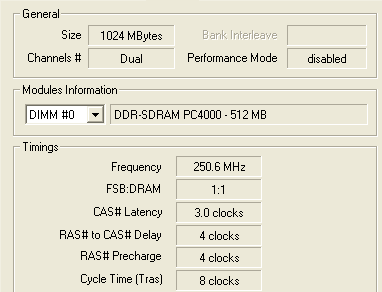Specifications and analysis
|
A perusal of the official specifications will give us a better insight into just how good these modules are.
Besides that, there's little to surprise the RAM enthusiast. Premium system memory manufacturers have quietly been raising the required voltage for their top-of-the-line parts. OCZ state that no less than 2.8v is required to run these modules at DDR500 speeds. We don't really have a problem with that. Potential purchasers are likely to have motherboards with a wide degree of DDR voltage adjustment. Let's remember that this memory is squarely aimed at those who can run at 250FSB+. That brings us into a category presently occupied by Intel Canterwood and Springdale-based motherboards. Most decent boards will have 2.8v+ DDR on tap. Pushing back the boundaries of system DDR is an inherently difficult task. Whereas we'd simply go straight into benchmarking a component, we feel that high-speed DDR needs to tested and verified as stable at high frequencies. With that in mind, we immediately put the OCZ PC-4000 Dual Channel memory kit into a trusty EPoX 4PDA2+ (Springdale) motherboard, knocked down our 3.2GHz ES P4's multiplier to 12x, and hit 250FSB in BIOS (3GHz / 250FSB / 1:1 ratio / DDR500 / 3-4-4-8 / 2.8v / phew!). It's always pleasing and reassuring to see modules run exactly as planned. First-time boot and first-time Windows XP stability.
1024 MBytes of some of OCZ's finest, running in dual-channel mode and at DDR500 speeds, all with 3-4-4-8 latencies. Scary, huh ?. |










